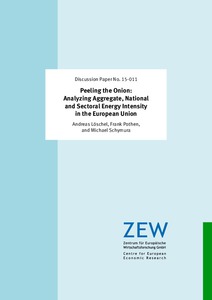Peeling the onion: analyzing aggregate, national and sectoral energy intensity in the European Union
"One of the most promising ways of meeting climate policy targets is improving energy efficiency, i.e. reducing the amount of scarce and polluting resources needed to produce a given quantity of output. This study undertakes an empirical exercise using the World Input-Output Database (WIOD), a...
| Main Authors: | , , |
|---|---|
| Institution: | ETUI-European Trade Union Institute |
| Format: | TEXT |
| Language: | English |
| Published: |
Mannheim
2015
ZEW |
| Subjects: | |
| Online Access: | https://www.labourline.org/KENTIKA-19113276124919314589-Peeling-the-onion-analyzing-ag.htm |
| Summary: | "One of the most promising ways of meeting climate policy targets is improving energy efficiency, i.e. reducing the amount of scarce and polluting resources needed to produce a given quantity of output. This study undertakes an empirical exercise using the World Input-Output Database (WIOD), a harmonized dataset comprising time-series of input-output tables along with environmental satellite accounts and socioeconomic information. The paper consists of two parts. In the first part we begin with an aggregated picture of EU27 energy intensity and its evolution between 1995 and 2009. Then we dig deeper and introduce sectoral detail to identify the economic changes that occurred during the same period. Finally, we disaggregate the EU27 into countries for regional analysis and perform a sectoral disaggregation for a fine-grained picture of energy intensity in Europe. In the second part of the study we take our findings from index decomposition analysis and subject them to panel estimations. The objective is to control for factors that may have shaped the evolution of energy intensity in the European Union. In particular, we investigate the impact of technological change, structural change, trade, environmental regulation and country-specific characteristics." |
|---|---|
| Physical Description: | 37 p. Digital |

